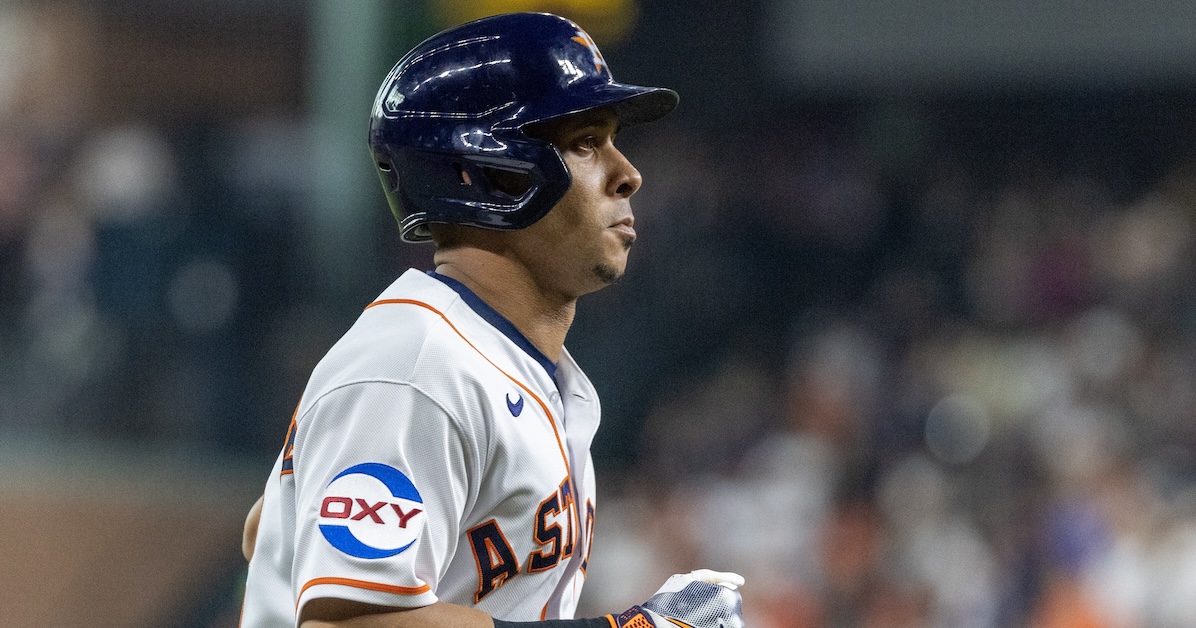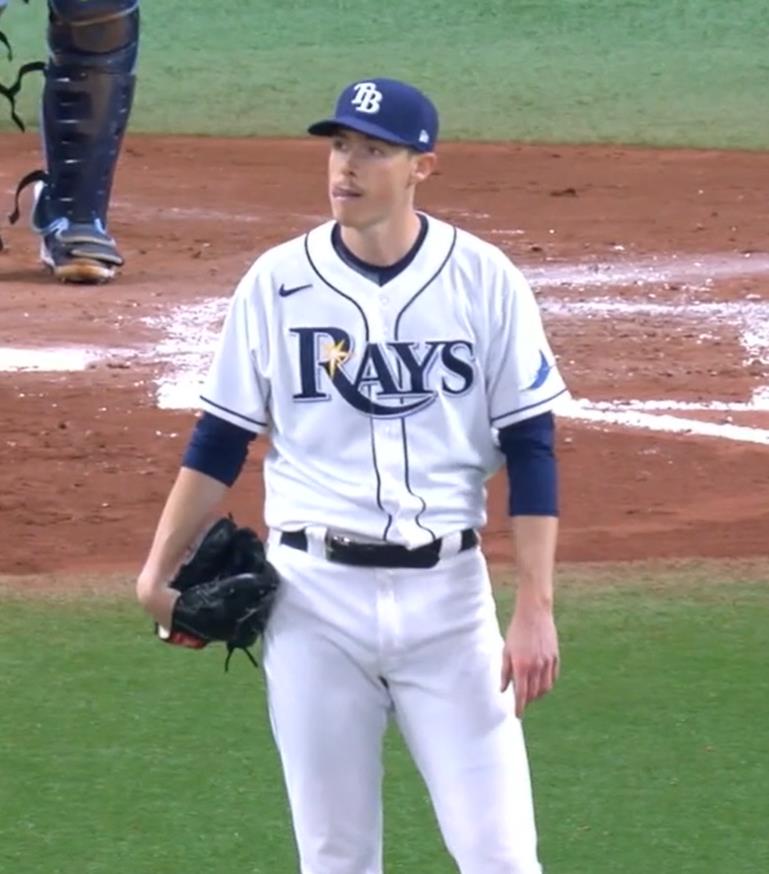
Thomas Shea-USA TODAY Sports
He may not have upper-echelon career totals, but boy was Michael Brantley an absolute baller. A five-time All-Star, Brantley also won a Silver Slugger and finished third in American League MVP voting in 2014, a year that saw him finish second in the AL in WAR behind only Mike Trout, the MVP winner. After a very successful 15-year career, the sweet swinging lefty outfielder has decided to hang up his cleats. It’s an unsurprising move for Brantley, who had battled shoulder injuries for much of the last three seasons and would have been entering his age-37 season.
Brantley was a unique player. Over the course of his career (2009-2023), the league-wide strikeout rate increased from 18.0% to 22.7%. But while the league was whiffing more and more, Brantley bucked the trend. During his 10-year tenure in Cleveland, he struck out 10.7% of the time; in the five years he spent in Houston, that mark was exactly the same. Indeed, his strikeout rate with the Astros was over 40% better than the league average rate (22.8%) during that period. Of the hitters with at least 1,000 plate appearances from 2019 to 2023, 21 had a strikeout rate below 14%. Only two had a higher wRC+ than Brantley: Alex Bregman (137) and José Ramírez (132).
His skill set was timeless, headlined by his elite contact ability. His wRC+ was actually higher in his 30s (124) than it was in his 20s (112). And his future looked bright – ZiPS projected him for a .290/.354/.416 line and a 114 OPS+ in the upcoming season had he played. As Timothy Jackson of Baseball Prospectus put it, Brantley was “unique among players with outlier skills.” And so, with his time in the majors coming to a close, I wanted to look back at Brantley’s career progression. More specifically, I wanted to examine how his consistently elite contact skills allowed him to maintain his performance despite myriad injuries.
There are a bunch of different ways to explain what makes for a good contact hitter. You can simply cite contact rate or strikeout rate. You can pull up a heat map of where and how often the hitter makes flush contact. You can even look at spray charts. All of those things are points in Brantley’s favor, but the reason he was such a productive contact-oriented hitter was because of his barrel variability.
Many hitters endeavor to train themselves to hit hard line drives. Doing that while not creating holes in your swing requires you to manipulate your body and barrel to get on plane with different pitch locations. The best of the best are able to do this while still making flush contact. This was Michael Brantley’s superpower.
Wherever the pitch was, it seemed like Brantley was able to get his barrel to it because of his superior horizontal and vertical bat variance. There is a reason one of his nicknames was Dr. Smooth. Everything about his swing was buttery. There is no better way to experience this than with your eyes, so I’m going to take you back to one of my favorite games from Brantley’s career, when he effortlessly peppered four singles against Tampa Bay on April 30, 2021. Let’s start with his line drive in the first inning against Ryan Yarbrough.
Yes, Yarbrough wasn’t throwing at crazy speeds, but locating a sinker in that spot is almost guaranteed to be a jam shot. Even if a hitter was to get their barrel to it, they might have trouble keeping it fair. But for Brantley, it wasn’t a problem. He pulled his hands in while flattening out his barrel to shoot the pitch up the middle for a casual single. He made something that was very difficult look effortless.
Yarbrough got a shot at redemption two innings later:
If you can’t beat him in, then you might as well try soft-and-away, right? Yarbrough spotted this pitch off the edge. For a split second, he seemed to have Brantley beat, but Brantley’s ability to decelerate his body to perfectly control his barrel made the location irrelevant. The split second where he paused was crucial for him to adjust his shoulders and get his barrel on the ball even though the speed initially fooled him.
It was a hopeless battle for the soft-tossing lefty, but he had to give it another go in the fourth inning:
First it was up the middle, then it was to right. Next up, left field. Even on a pitch under the zone, Brantley was able to get his bat vertical by creating a little extra torso bend and giving his hands space to turn over. All in a day’s work. He saw three good locations, but notched three hits anyway. That’ll leave any pitcher looking like this:

This reaction was pretty common for pitchers when they faced Brantley. They’d make their best pitch, and he’d beat them anyways. In his next at-bat of that game, Brantley flicked another single to right field to cap off a four-hit night, though luckily for Yarbrough, Trevor Richards was on the bump. What a relief.
While I could watch Brantley hit forever, I won’t subject you all to an endless article. Instead, I’ll leave you with one more point of appreciation. There is a general belief in the game that it is very difficult for hitters to control where they hit the ball on any given pitch. Without question, there is merit to that belief. Hitters can only hit what they get, and they can’t control what they get. Some hitters have holes in their swing and need to attack a particular subset of pitches and locations, but then there are outliers like Brantley who can get their barrel to any spot. That means that if you leave a big hole on one side of the field and pitch to a location that lets a hitter like Brantley play with the gap, he’s going to kill you.
During his time in Houston, Brantley had a .362 wOBA in all non-standard fielding alignments, i.e. shifts and shades; in standard alignments, his wOBA was .335. If you’re going to shift on the barrel variability king, then you better not leave pitches up and away. Zac Gallen, Jonathan Loáisiga, and Luis García all learned that the hard way:
Beautiful work.
Rangers hitting coach Donnie Ecker once said in an interview, “[T]here’s a lot of masking up guys at the big league level. There’s a lot of guys that have big holes.” He was referring to how hitters move and what their movement can do to affect the variability of their bat path. Michael Brantley was the antithesis of masking up. He could hit anything you threw at him. No, he’s not a Hall of Famer or a record breaker, but he was a nightmare for any pitcher to face. The game will miss him, but pitchers sure won’t.
Source
https://blogs.fangraphs.com/after-15-years-michael-brantley-is-hanging-up-his-spikes/
 Backyard GrillingWeekend WarriorsAdvice from DadBeard GroomingTV Shows for Guys4x4 Off-Road CarsMens FashionSports NewsAncient Archeology World NewsPrivacy PolicyTerms And Conditions
Backyard GrillingWeekend WarriorsAdvice from DadBeard GroomingTV Shows for Guys4x4 Off-Road CarsMens FashionSports NewsAncient Archeology World NewsPrivacy PolicyTerms And Conditions
